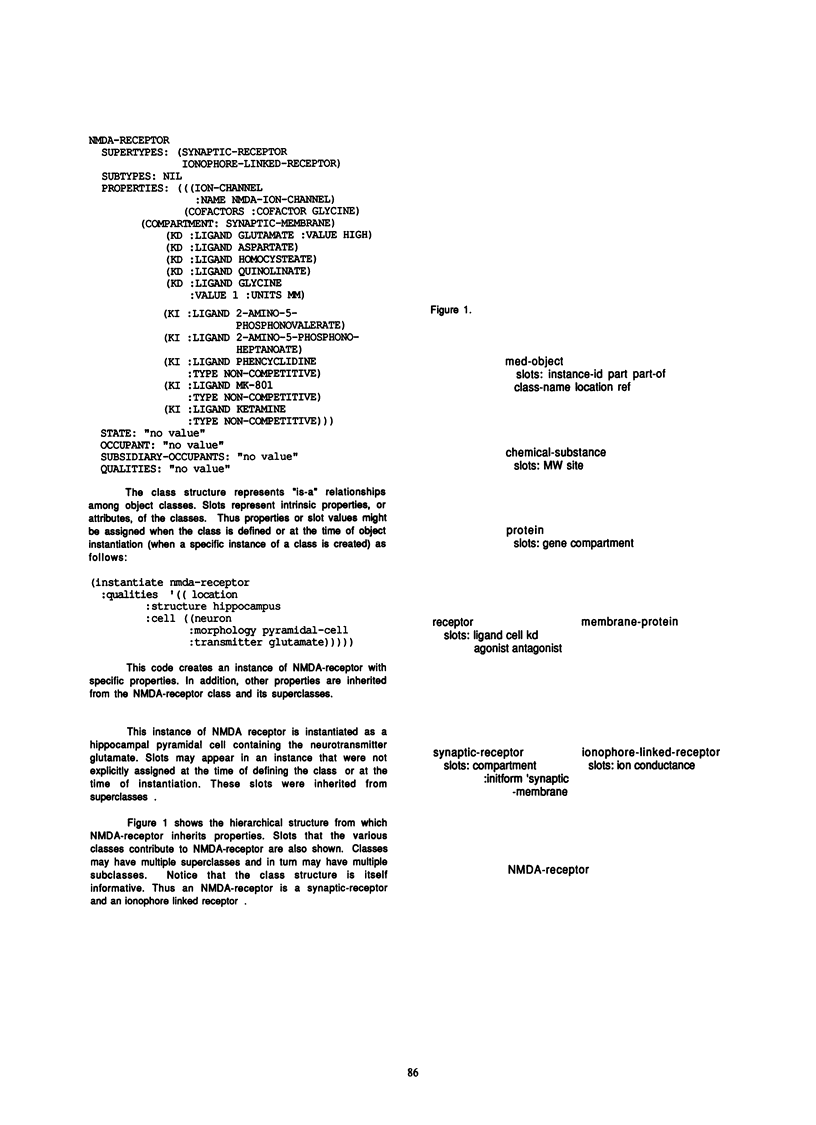Abstract
We are currently developing an object-oriented knowledge base (SENEX) in the domain of neurodegeneration and loss of memory in aging. Initially, we are focusing on three sets of issues in the representation of biomedical information. First, we are seeking to extend the Medical Subjects Headings (MeSH) nomenclature to include new classes of biomedical entities and to include relationships among those entities. Secondly, we are structuring biomedical information rather than categorizing text for bibliographic retrieval. Finally, we are exploring ways in which such information could be used in an interactive system created for purposes of education and for designing basic research experiments. This article describes the current behavior of SENEX, which is being developed using the COMMON LISP Object System (CLOS). It also discusses various issues raised, and plans for future development.
Full text
PDF




Selected References
These references are in PubMed. This may not be the complete list of references from this article.
- Brown T. H., Chapman P. F., Kairiss E. W., Keenan C. L. Long-term synaptic potentiation. Science. 1988 Nov 4;242(4879):724–728. doi: 10.1126/science.2903551. [DOI] [PubMed] [Google Scholar]
- Gamble E., Koch C. The dynamics of free calcium in dendritic spines in response to repetitive synaptic input. Science. 1987 Jun 5;236(4806):1311–1315. doi: 10.1126/science.3495885. [DOI] [PubMed] [Google Scholar]
- Muller D., Joly M., Lynch G. Contributions of quisqualate and NMDA receptors to the induction and expression of LTP. Science. 1988 Dec 23;242(4886):1694–1697. doi: 10.1126/science.2904701. [DOI] [PubMed] [Google Scholar]
- Thompson R. F. The neurobiology of learning and memory. Science. 1986 Aug 29;233(4767):941–947. doi: 10.1126/science.3738519. [DOI] [PubMed] [Google Scholar]


